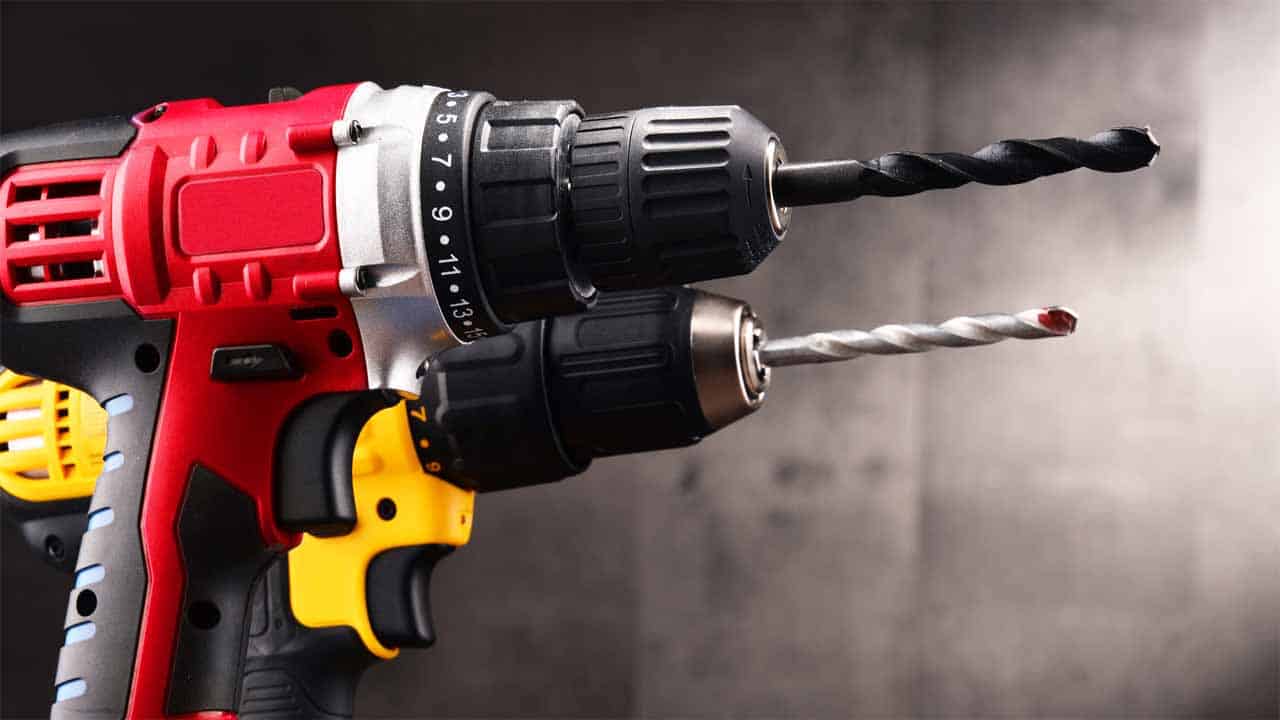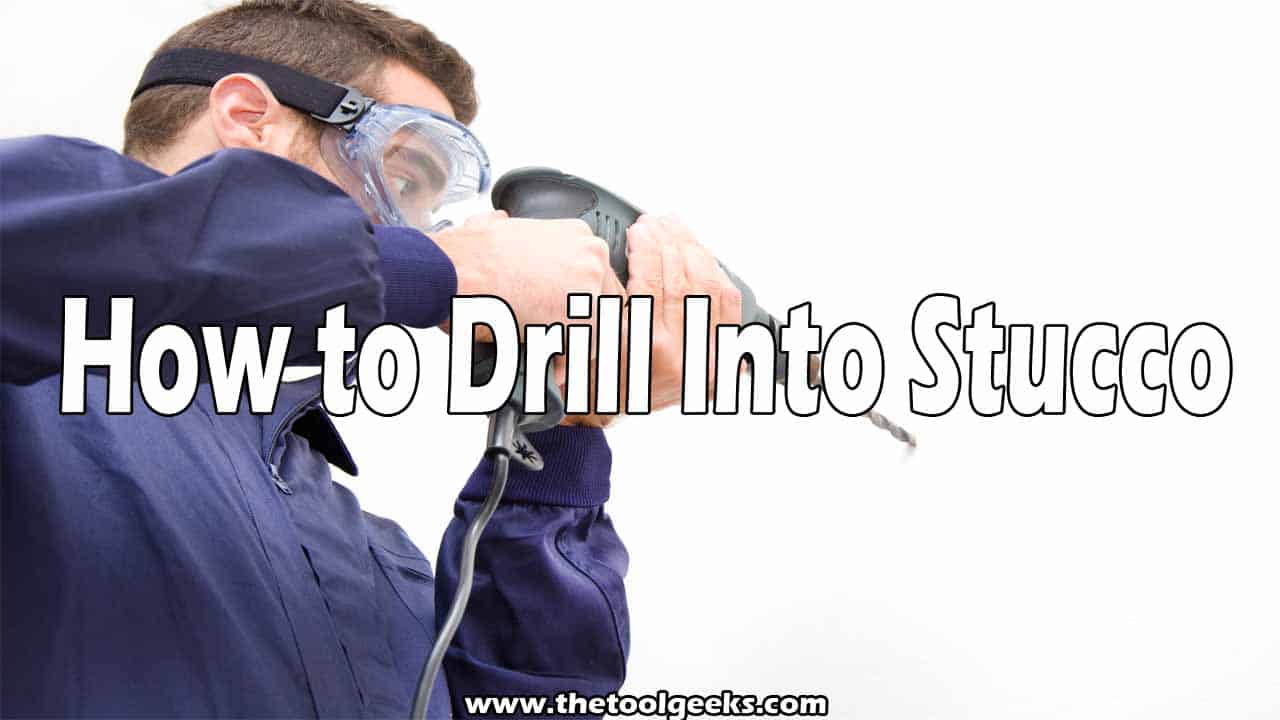How to Drill Into Stucco – 6 Easy Steps
TheToolGeeks.com is a participant in the Amazon Services LLC Associates Program and other affiliate advertising programs. We may earn from qualifying purchases. (Learn More).
Stucco drilling is often seen as one of the most arduous tasks. Unfortunately, it is because most people go into it without knowing the nitty-gritty. That’s why we’re here with a step-by-step guide on how you can drill into the stucco.
This hard form of stucco makes people think that drilling into stucco is hard. Drilling into stucco is easier than how most people describe it; it is a relatively simple thing to do.
After reading this article, you’ll be able to drill into stucco with the right tools easily.
Jump To Page Contents:
Which Drill and Bits should you use for Drilling Stucco?
Stucco is a building material made from water and a binder. It is a decorating material used on walls, ceilings, and other surfaces. Stucco is applied in its wet form but later hardens into a thick, solid, and rigid material.
So, to drill into it, you need a power drill and the right drill bits. We usually use a hammer drill and masonry drill bits (carbide and diamond-tip) and always drill smoothly.
What is a Hammer drill?
The working principle of hammer drills is that they have a percussion hammering mechanism. It works like this: two toothed gears interact while rotating the drill bits. They produce vibrations against each other.
The hammer drill has different features from drills and jackhammers.
You can use hammer drills for construction, decoration, and repair. It is a versatile tool.
There are different hammers for different options.
- Light hammers drill: It weighs for 4Kg and consumes 400-800 watts.
- Medium hammer drill: It weighs 8 kg and consumes 100 watts.
- Heavy-duty hammer drill: It weighs over 8 kg and consumes 200 watts.
Considering the hardness of the stucco, we recommend using a hammer drill on the stucco.

A standard drill can be a good alternative if you do not have access to a hammer drill and need the stucco drilled. Adequate care needs to be taken regarding the amount of pressure exerted. Overall, we won’t recommend using a regular drill.
Related Read — Cordless vs Corded DrillsHow to Drill Into Stucco? – Easy Steps
Drilling into stucco is easy, but any carelessness can end up causing significant damage. It can crumble with the pressure of your drill. Below we will discuss the steps to safely and efficiently drill into the stucco.
1. Gather Tools & Clear the Surrounding Area
Before starting your drilling, you should gather all necessary tools, such as:
- Dust mask: it helps in avoiding the dust going into your mouth.
- Goggles: Wear goggles to avoid dust or any particles getting into your eye
- Working gloves and ear protection: They will ensure extra safety.
Additionally,
- A ladder – if you will use the drill on the height. You can also use a stool or chair.
- Measuring tape – To determine the exact place of the hole.
- Pencil – You need a Pencil to mark the correct point.
- Masonry drill bits – As outlined, these are best for rigid material.
- Hammer drill
Clear the surrounding area; you must clear the space where you will drill. Make sure no pet or small kid is there in the surrounding area. It is because the noise can terrify them.
2. Locate and Mark the Drill Point
After gathering the equipment, you need to finalize the drill location. That entails determining an exact point on the stucco.
Next, use the tape measure to set a boundary around the drilling area. Using a tape measure to set a boundary is essential. It will help you locate the place you want to drill.
After making the boundary mark the point with a pencil or marker to remember the point.
3. Attach the drill bit to the Drill Machine
The primary step is to attach your Masonry bits to your drill machine.
In this article, we’ve outlined steps to attach the drill bit: How to Drill through Vinyl Siding?
Before commencing with the drill (it should be a hammer drill), create a small pilot hole on the marked point. This tip is handy because it will ensure you do not slip while drilling.
Another important thing is choosing the right bit: it should be manageable. If you drill a larger hole than required, the screw won’t hold it, and vice versa. Regarding the depth of the hole, we use masking tape on a drill bit so that it’s easy to drill knowing the depth limit.
4. Start Drilling
The actual drilling starts at this stage, and you need to turn the drill on. Switch on the wall socket, Put your drill on the mark, and pull the trigger. You will observe as the drill starts moving toward the pointed mark on the stucco.
At the start, the pressure should be gentle.
You must push the drill against your Stucco and then increase the pressure thoroughly (But don’t apply too much force). While the Drill is inside the wall, you should move it horizontally and vertically but not wobble around.
You should be careful not to push the drill too hard. Most experts suggest that drillers should not extend 1/8-inch than the screw to ensure a firm hold. Pushing the drill hard and drilling wide might cause the screw to lose quickly.
Tips While Drilling
These tips will be helpful if you consider: next time while using the drill.
- Stucco structures could sometimes have electrical wirings; hence, adequate care must be taken while drilling.
- Be patient, do not puncture through the stucco rapidly, and take it gently, easily, and slowly.
- Don’t ignore necessary safety tools. Safety should be your priority.
- Your drill bit and the wall should be perpendicular to each other (at an angle of 90)
5. Clear the Drilled Area
The next step you have is to keep the place clean. Most of the time, the dirt caused by the drilling pieces accumulates. You need to clean the debris ( you can use an air compressor).
6. Seal The Hole You Drilled
After successfully drilling into your stucco wall, don’t leave the drilled hole open for dust particles and anything that may ruin the required diameter and depth of the hole.
You can now screw or use an anchor to seal it.
Related Read — How to Drill Into a Stud?Conclusion
Drilling stucco is easier than most people think. It is so easy that it can be done regardless of whether you are an expert.
This article contains easy steps to drill holes in stucco without damaging it. There are two types of stucco; both can be drilled similarly. Everything you need to know about this topic has been discussed and thoroughly explained.
Did you know that sometimes you should not drill holes in stucco? Did you know there are precautions to take before, during, and after drilling? All these have been answered in this article.
Lastly, to make this article helpful, some frequently asked questions relating to drilling stucco have been answered, and we hope this guide serves you well.
Related Read — How to Drill Into Bricks?Frequently Asked Questions About Drilling Into Stucco
When Is the Best Time to Drill Stucco?
The best time to drill through a stucco is when it has undergone repair after damage or a few days after it has been newly plastered. Before drilling any type of stucco, ensure it has dried.
Does Synthetic and Traditional Stucco Have the Same Method of Drilling?
No, they are not drilled the same way. This is because both types of stucco are built in different ways. In traditional stucco, cement and lime is mostly used to give hardness. On the other hand, synthetic stucco, acrylic resin is used (It’s water-resistant).
Amazon and the Amazon logo are trademarks of Amazon.com, Inc, or its affiliates.

